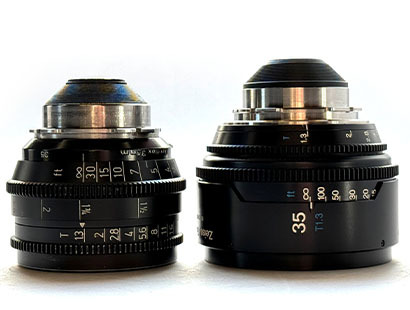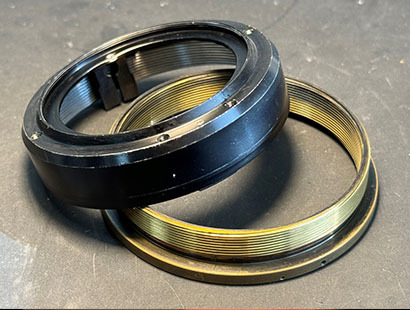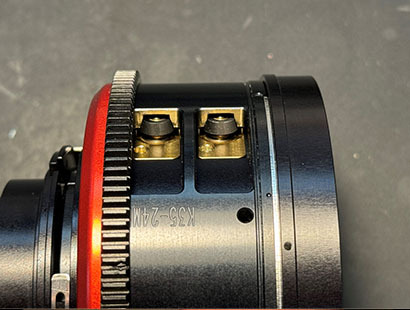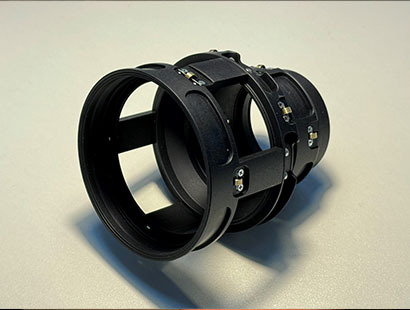What is a rehoused lens?
For those of you who do not know what a rehoused lens is, this is an important question to be asking. Even for those who know what a rehoused lens is, you may find some useful information in this article about the different levels of rehousing and how common this phrase has become. To answer this question on the most basic level, the process involves modifying a lens usually with a goal to enhance the useability or performance.

Why would you rehouse a lens?
The reason why lenses are modified vary from manufacturer to manufacturer and sometimes vary on customer requests too. The most common reason is to allow for more useability of the lens on modern day cameras and with modern day equipment. However, some lenses are modified to change the performance of the lens. In some cases, it is possible to extend the close focus of the original lens. Another gain may be to make the lens completely internally focussing, rather than the telescoping effect of the original lens. It could be to make all the lenses in a particular set have the same front diameter and gear sizes/spacings for a more user-friendly set. A common advantage of rehousing a lens is to put a more suitable mount on a lens that is no longer able to be used on cameras of today. Rehousing a lens also allows manufactures to build in speed boosters or wide-angle adaptors to change focal lengths/T-stops to various effects. A great advantage to rehousing a lens is also the opportunity to improve the mechanics of the original lens. This is especially true when dealing with vintage lenses or stills lenses that were never designed to meet the demands of a cine environment.
The photo here displays a 35mm Zeiss Super Speed MKIII. The lens on the left is the original and on the right is the lens after it has been rehoused.
Differences in rehousing
Now we have a very basic understanding of what a rehousing is and why one would want to pursue this process, let’s look at different levels of rehousing and how it came to be. Rehousing has been happening in the industry for decades now. Some of the earliest lenses to begin this process were the original Cooke Speed Panchro’s from the 1930s-1960s. These lenses were only capable of being used on a PL mount camera by using an Arri Standard to PL mount adaptor. However, this was not an ideal solution as the lenses are so small and often had backlash and image shift when racking the focus. Therefore, a more user-friendly way of working with these lenses was needed. Century were one of the first companies to take on such a project and developed a new mechanical design for these lenses. They also integrated an interesting focus system that allowed for two revolutions on the focus throw. This allowed the lenses to travel further, therefore improving the close focus. The focussing mechanism used was a helicoid thread.
As manufacturers saw more demand for this type of modification, it began to gain traction. Furthermore, once the single-chip digital sensor started to take off, the demand for using vintage lenses on new cameras began to explode. However, not all rehousings are made equally. If you’ve ever researched how much the rehousing process costs, you’ll find a huge range in prices for what appears to be a similar process. We will explain the difference between these and why it has such an influence on the price.
In its most basic form, a rehousing can be where some additional components are attached onto the original mechanical system. The advantages of this are; it allows for a consistent front diameter across the set, the iris and focus gear sizes can be made uniform across the set, the iris and focus gears can be positioned in the same place (with relation to the film plane), the scales can be made clearer as can the markings of the lens, it allows for a standard mount to be used, the cost is relatively lower than a more in depth rehousing. The disadvantages can include any issues with the original mechanics will still be present, it adds weight to the lens, the internal mechanics will wear quicker with more professional use. The main disadvantage to this is the mechanical components remain the same as the original lens. Therefore, if the lens had any backlash or image shift before the rehousing process, it would still exhibit these afterwards. It also means that the iris and focus throws will not be extended. The mechanical end stops are likely to not be improved, therefore risking damage when used with follow focus motors.

The next stage along from this is where the lens is rehoused by removing the original mechanics and introducing a new helicoid focussing system. This can produce a very useable lens once the rehousing is complete, but only if the work is carried out to a high standard. For a helicoid focussing system to work well, with no backlash or image shift, while still having a smooth movement, the tolerances of machining and assembly need to be highly controlled. This type of rehousing requires a ground up approach with the design process. The original lens has the mechanical components removed and replaced with the new helicoid system. Therefore, new stops are introduced, a more usable mount is attached and the outer dimensions and aesthetics of the lenses can be designed to match across the set. These types of rehousing can vary drastically with their quality of design, machining and craftsmanship. The best versions of these housings have stainless steel stops, stainless steel mounts and utilise aluminium and occasionally brass for the remainder of the build. They will be machined to tight tolerances and assembled by skilled technicians.
Again, the assembly of these types of rehousing can vary. Sometimes you will find that the focus/iris scales are generic and have not been marked up individually. Other versions may not even have lines for each focus mark, but just generic numbers around the focus scale. The best versions of this type of rehousing will have individually marked focus and iris scales with accurate repeatability. However, this is where the main disadvantage of the helicoid focus system comes in. As the lens is used, the threads of the system run against each other. Even though the lens will be assembled with grease, the metal will work against each other over time. While regular servicing will prolong the life of the rehousing, it will inevitably wear and introduce backlash and image shift. This process will be accelerated if the lens is used in adverse conditions such as dusty/sandy environments.
The next level of rehousing is when the new mechanical design incorporates a cam system. This eliminates the issues that occur with a helicoid system as there are no longer threads to wear on the focus movement. These types of rehousing are generally more robust and serviceable than those mentioned previously. However, there are still different levels of cam-based focussing systems. On a basic level, a cam-based system uses a linear ‘slot’ in the focus barrel with a ‘follower’ that runs along the length of the slot when the focus is pulled. More basic versions of this do not use a bearing for the rotation control of the focus barrel. Instead, they will use running surfaces on the chassis and focus barrel, with grease to act as a barrier between the two metal surfaces. This provides a cheaper option for the manufacturer as well as less craftsmanship for the assembler to build the rehousing. On some types of rehousing like this, they will be assembled with springs internally to try to stop the backlash occurring as the components wear.

Moving up another level, is using a similar method to the above, but introducing a bearing that connects the focus barrel to the chassis. This is a very reliable method with a much longer service life than just using running surfaces. However, it does require a specific type of bearing as to not introduce backlash while still having a low level of preload to make the focus movement smooth and consistent. This adds a significant cost to the process of rehousing. Also at this level, is where the cam-system is designed with an angle (rather than straight sides) and the follower has a matching angle on the flanks. With the follower under tension from a spring, it means that as the parts wear, the spring takes up the slack and no backlash or image shift is introduced into the system. Therefore, this significantly improves the longevity of this type of rehousing.

At this stage of rehousing, it is also when the optics internally are loaded into a ‘carrier’ that uses miniature bearings. This provides a very smooth travel for the optical unit(s) as the lens is focussed.
One step above this is when the non-linear cam is introduced. The system works on the same principles as above, however there is more control on the focus throw with a non-linear cam. This is because the cam can be used to slow the movement of the optics down as the lens is reaching infinity but accelerate them when reaching MOD. This creates a very useful feature for the user of the lens (such as a focus puller). It creates a situation where the focus marks are more spread out on the longer focus distances (i.e. between 10’ to infinity) and decreases the gaps between the close focus marks (i.e. between 12” to 3’). This added to the extended rotation of the focus barrel makes for a more professional rehousing. At this level of rehousing there are also some small details that certain manufacturers use to make improvements. One of these is to add brass ‘boots’ onto their miniature bearings.
Using a non-linear cam system, especially on floating element designs can add significant design time and more complicated manufacturing processes, therefore increasing the price charged. Read more about floating elements here.
As you can see from this article, there are multiple versions of rehousing that range in quality and craftsmanship. As you add in the higher quality and greater skill, plus more complicated design, the price for the rehousing will increase. Not only this, but one must consider the quality of the materials being used. There are multiple different grades of aluminium, stainless steel, brass and acetal that are used within the rehousing process, the higher the specification of the material, the higher the cost, but greater precision can be held. If you’d like to know more about how much a rehousing costs, please read this article How much does a lens rehousing cost?.
For more specifics on our rehousing process and what you can expect from TLS, please get in touch with us at sales@truelens.co.uk or calling our office on +44 (0)1455 848411.






